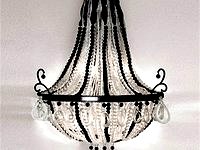device that is emitting light into that space
is important throughout the entire field
of vision. That is why this methodology is
important, that is why we should not distinguish
any element when we paint with light.
Our urban nocturnal environment can be
compared to an unfinished pointillist painting,
because there are so many bright glary dots
of lights in our field of vision. My methodology
considers avoiding those dots and tries to
create a balanced picture throughout our
visual frame. I am especially fond of working
on lighting designs in landscape where light is
not so easily controlled as it is in architecture.
Yet at the same time, you can achieve the
most romantic, theatrical stage designs. I
love these scenographic
approaches. Objects you illuminate are
already set for you; the scene already exists
in its original, natural form.'
What is your starting point when you begin to
design?
'One of the oldest living lighting designers,
Howard Brandston, once said that those
who could not visualize the lighting of a
space with their eyes closed, were simply not
qualified to deal with light. That is, my light
and my visualization process, indeed, arise
from closing my eyes, imagining the space in
the dark, and experiencing the form of light;
the way it reveals the form of the object it
illuminates, what happens with the shadow
arising from this interaction. I understand that
light lives
in five forms. Light is invisible, but has form. The
first form of light is in the source, the second is
the invisible form of light itself, the third is the
form of the object revealed by light before it
touches it, the fourth is the form of the shadow
and the fifth is the form of the consequence
that comprises all the previous four forms, as
well as the way we feel and experience the
space considering the four forms.'
Besides the personal relationships, doesyour
approach and choices differ from one continent
to the other? For example, how big is the role of
climate, culture and other local elements in your
design?
'The phrase integration with inspiration also
applies not only for the building itself but
naturally for the environment and cultural
tradition so the form of the light should
follow the form of the object and it should be
unobtrusive to the viewer. That means that the
deep thought of light is without boundaries. It
flows and it should flow globally regardless of
cultural difference. But also living in an area
where four seasons are clearly changing
our daily perception of light, shadow and
colour, probably has some influence on my
understanding or “learning to see” the light.'
Do you agree that the outdoor lighting design at
first needs to be utilitarian?
'Light should be always designed beyond
utilitarian, otherwise it’s not designed. Name
one project where you feel that architecture,
landscape and exterior lighting merge
perfectly.
The
technology
nowadays
permits us to create dynamic public lighting
and maybe a very good example would
be the illumination of town of Motovun.
A project which is in the concept phase
but it implements all necessary elements
of a human centric lighting design. On a
microlevel we achieved this goals in our
recently realized project Verudela Art Park
in our town of Pula.'
What inspires you?
'In Greek mythology inspiration as an
unconscious burst of creativity that comes
from the muses.
I would agree with that but also add that
it’s a question of the site-specific relations
between the investor, architects and partners
in project. For me it happens mostly when the
spirit of a place, the Genius loci, brings to me
the decisive moment of inspiration. The site
usually evokes clear mental pictures in my
mind, of what I see on that specific scene
during the night, and this applies mostly to all
the lighting projects that I’ve done so far.'
118
TESTIMONIALS







